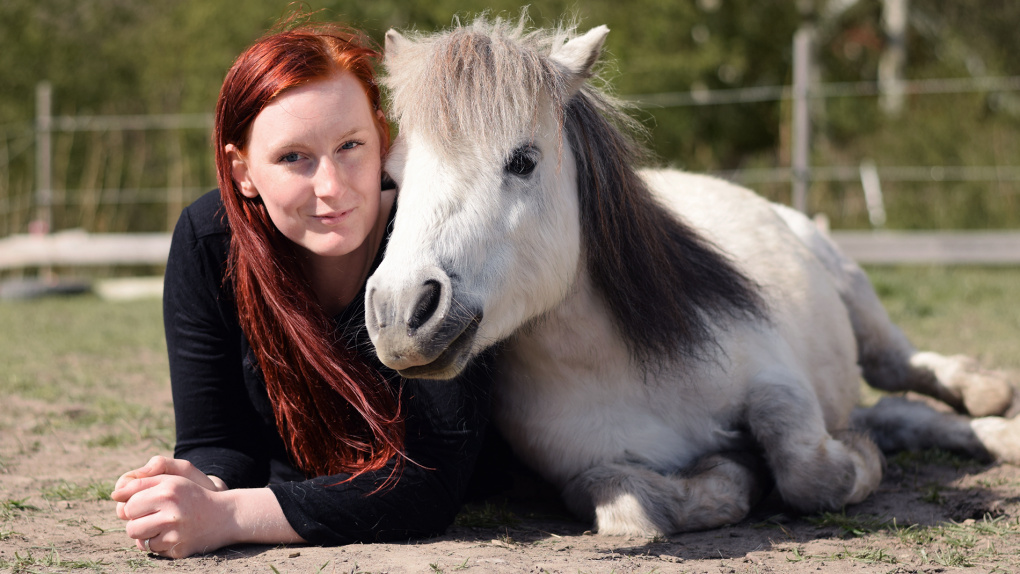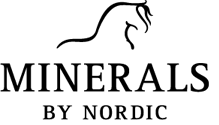
Expert tips: Getting started with clicker training
Why positive reinforcement? And how do you prevent the horse from becoming nippy? Are there any important tips to consider? We asked positive reinforcement expert Paulina Tufvesson, who runs the popular Instagram account Playlovelearn.se, to help us answer our questions on how to best boost your horse's training enthusiasm with positive reinforcement.
Training with a clicker is not only kind and gentle to the horse, it's also incredibly fun! I've been clicker training for over 10 years now, working with everything from horses and birds to sheep and cats. Initially, I used clicker training more as a complement to other more "traditional" training, but over the years, clicker training has taken up more and more space in my life - and today, I base almost everything I do with my horses on positive reinforcement and the principles of clicker training.
What is positive reinforcement training?
Positive reinforcement is a training method that encourages good behavior by rewarding it instead of punishing or correcting bad behavior. It's an incredibly gentle training method that builds confidence in the horse and increases training enjoyment. When working with positive reinforcement, the horse is never forced to obey but chooses voluntarily to follow our commands because it's fun and rewarding for them. If you're used to working with pressure and release, I understand that it may feel unfamiliar to let go of control, but it works perfectly fine as long as you know what you're doing and build a solid foundation.
How do you work with a clicker?
When training with a clicker, it's used like a fake camera. When you see the horse do something that you like and want to see more of, you take a "picture" of that behavior by clicking the clicker. The horse hears the clicking sound and understands that "the thing I did when I heard the click was the right behavior." Just like with a real camera, you don't want to click too early or too late, or else you'll miss the moment. Timing is super important! The clicker is used as a marker that tells the horse it did the right thing and that a reward is on its way.
In what contexts can clicker training be used?
Clicker training can of course be used to train fun tricks, but it's also an incredibly effective way to solve more complicated behavioral problems such as loading, everyday handling, and even riding. You can completely decide when and how much to use the clicker in your interactions with the horse, but for me, the more I use it, the happier, more confident, and more motivated my horses become to train.
How do you start clicker training?
If you want to start clicker training, I recommend doing thorough research first. Just like with any other training you can make mistakes, and then you can end up with a horse that pushes, nips, and is frustrated. I've made many mistakes over the years, and of course, making mistakes sometimes is part of the process, but if you read up and prepare first (or preferably - seek help from a trainer), you'll save yourself and the horse a lot of frustration and time.
How can you reward the horse?
When training with positive reinforcement and clicker training, you reward the horse when it does something right. The reward is usually edible (hay, grass, grain, treats, carrots) because that's the reward most horses appreciate. But if you have a horse that appreciates and values being scratched, for example, you can certainly use that instead. Anything the horse values can be used as a reward! One of my three horses finds touch and scratching motivating, but the other two don't appreciate it as much.
How, where, and when should you clicker train?
When talking about rewards, clicker trainers often discuss "how," "where," and "when." How is the reward given? Where is the reward given? When is the reward given? When you manage to answer (and do) correctly on all three points, you get a calm and content horse that doesn't beg, nip, or get frustrated around food rewards. If you answer (do) wrong on one or more points, there's a risk the horse will become pushy, nippy and get frustrated instead of happy when the training starts. When that happens, it's absolutely not the fault of the treats or the clicker training, but rather the trainer who inadvertently created the problem through how, where, or when the rewards were given to the horse.
Tips on the type of reward?
The choice of reward has a big impact on the horse, and it's important to find a treat that's just right. If the treat is extremely tasty, the horse can become frustrated and always want more, but if the treat isn't tasty enough, the horse won't think it's worth working for at all. It's a delicate balance! I personally use Minerals By Nordics treats for all my horses (and dogs!) and choose the type depending on the individual I'm working with and what we're going to do. My Ardennes horse easily becomes frustrated around food, so it's very important that the treat isn't too tasty for him, so I was pleasantly surprised at how well he responded to the taste of 100% Apple. The pieces are a bit bigger, so he gets longer chewing time, and he finds the treat tasty enough to work for without getting frustrated. For my Shetlands, smaller pieces like in Beetroot Hearts or Mini Apple & Carrot work better. To avoid frustration and problematic behaviors around food, I always try to give the right reward in the right way, in the right place, at the right time. Easier said than done sometimes! However, there's no universally right answer to the questions that fit everyone, so you have to adapt each training session to the horse you're working with.
Good tips when you start using food rewards
Although there are no correct or right answers that fit all horses, there are a few tips to keep in mind:
• Always give rewards away from your body at an arm's length distance. This is to avoid the horse seeking treats in your pockets.
• If your horse is nippy, you can drop the rewards in a bucket on the ground instead of giving them directly from your hand.
• Reward often to maintain the horse's focus and reduce frustration.
• Use hay or chopped lucerne as a reward if your horse is overweight or cannot eat treats for other reasons.
When starting with clicker training, it can feel difficult and unfamiliar, but once you get past that, a whole new world will open up! Don't hesitate to seek help from a trainer to ensure you and your horse get off to a good start. Good luck!
Writer: Paulina Tufvesson
Instagram: Playlovelearn.se
Studies on positive reinforcement and clicker training
A group of French researchers tested training ponies to back up on command using either negative or positive reinforcement. 21 ponies were divided into two groups and then trained daily for 1-3 minutes over five days. For the ponies trained with negative reinforcement, the trainer used a whip and waved it in front of the pony while saying "back up," without ever touching the pony with the whip. If the pony took a step back, the waving stopped immediately. Ponies trained with positive reinforcement were given a carrot pellet if they backed up on command.
Initially, none of the ponies understood what was expected of them the first time the trainer said "back up." However, by the last day, practically all of them succeeded, but there were differences between the two groups. Ponies trained with carrot pellets responded faster to the command. All ponies trained with the riding whip at some point pinned their ears back during training, which none of the ponies receiving positive reinforcement in the form of carrot pellets did. Ponies given carrot pellets also never stepped sideways instead of backward, as the other group did.
Negative reinforcement also seemed to result in a higher head position, more exaggerated head movements, and a higher heart rate during training sessions. By day three, the ponies trained with negative reinforcement had a higher heart rate even before the trainer said anything to them, while ponies trained with positive reinforcement were more likely to spontaneously seek contact with the trainer. Five months after the training ended, there was a significant difference in how the two groups of ponies approached an unfamiliar person. Ten out of eleven ponies trained with positive reinforcement sought contact with the person, while only two from the group trained with negative reinforcement did.
"This study shows that just a few short interactions (total time: 5 to 15 minutes) between an animal and a human can affect the animal's perception of humans and long-term influence a future relationship," the researchers wrote in their conclusion.
References:
Andrew N. McLean, Janne Winther Christensen, The application of learning theory in horse training, Applied Animal Behaviour Science, Volume 190, 2017, Pages 18-27, ISSN 0168-1591, https://doi.org/10.1016/j.applanim.2017.02.020.
Lesley Innes, Sebastian McBride, Negative versus positive reinforcement: An evaluation of training strategies for rehabilitated horses, Applied Animal Behaviour Science, Volume 112, Issues 3–4, 2008, Pages 357-368, ISSN 0168-1591, https://doi.org/10.1016/j.applanim.2007.08.011.
Sankey, C., Richard-Yris, MA., Henry, S. et al. Reinforcement as a mediator of the perception of humans by horses (Equus caballus). Anim Cogn 13, 753–764 (2010). https://doi.org/10.1007/s10071-010-0326-9
Valenchon M, Lévy F, Moussu C, Lansade L (2017) Stress affects instrumental learning based on positive or negative reinforcement in interaction with personality in domestic horses. PLoS ONE 12(5): e0170783. https://doi.org/10.1371/journal.pone.0170783

 SWE
SWE



 ENG
ENG NO
NO AX
AX DE
DE